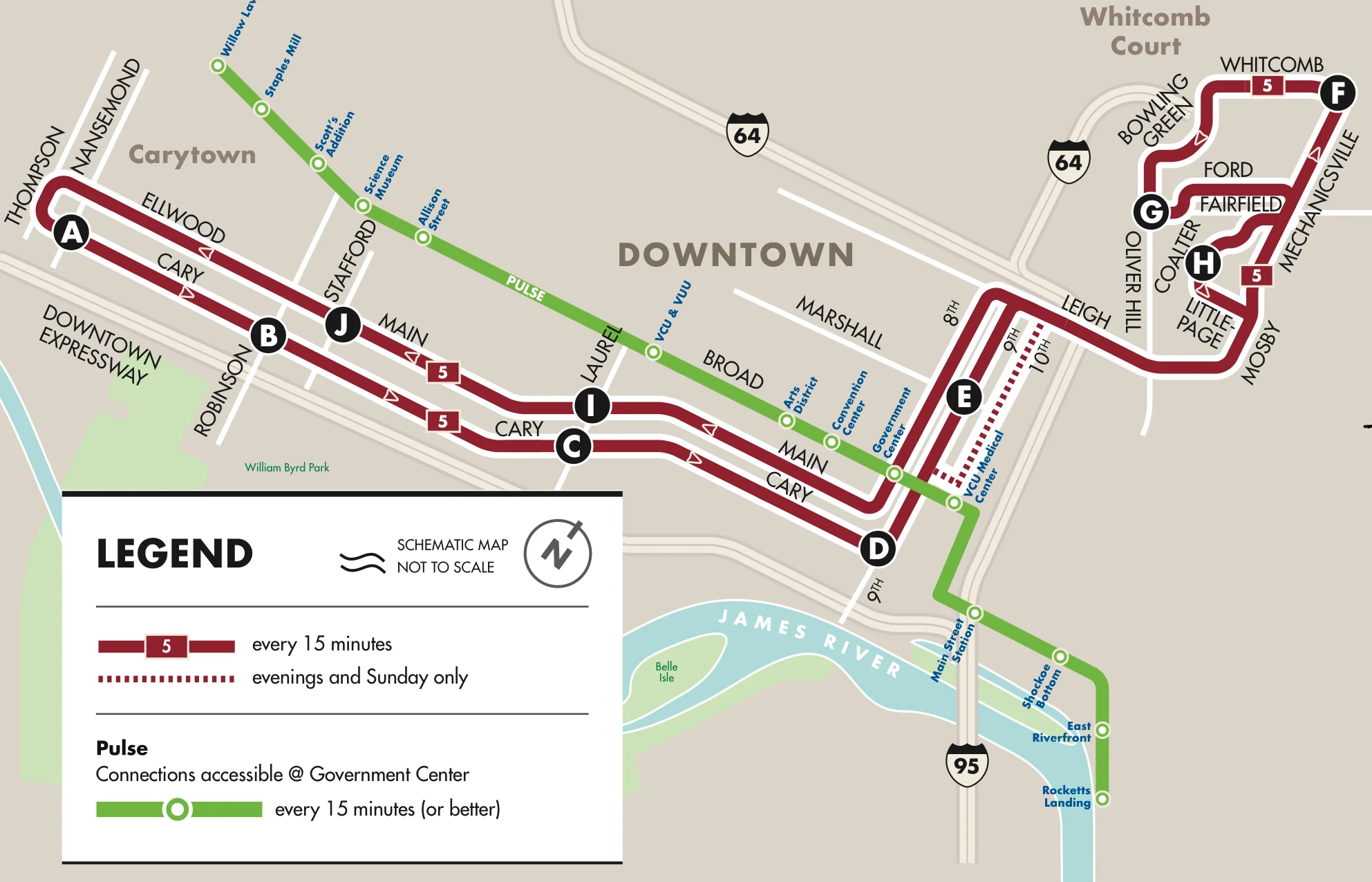AROUND THE REGION
GRTC has released newly updated timetables that reflect the changes coming to the bus system on June 24th. Now, with those public timetables, you can get a real feel for how clockface timing works. Gone are the days of buses coming at unpredictable, irregular intervals! For example: The new #5 (PDF) stops at Cary & Robinson on the hour, 15 minutes past the hour, 30 past, and 45 past. It does this all day long, from 5:00 AM to 6:45 PM (when it switches over to evening hours). This easy-to-remember, easy-to-predict scheduling should make it straightforward for folks, in this particular example, to close out their tabs and catch the bus home. Of course, clockface timing also makes it easier to plan trips to the bank, the grocery story, a medical appointment—wherever you need to go.
Also, while you’ve got that route map pulled up, GRTC has cleverly included the Pulse on these maps and where you can make connections with it. The #5, for example, connects with the Pulse at the Government Center station. Useful stuff!
ELSEWHERE
The folks at TransitCenter have a fairly technically yet really interesting post up about how to understand the nationwide drop in transit ridership over the past couple of years. One of the key predictors of increased ridership is an increase in the amount of bus service provided by a transit agency. This makes a lot of sense: Provide more bus service and more folks will ride the bus.
StreetsBlog looks at a temporary, pop-up bus lane in Boston and how it dramatically reduced commute times for folks using only traffic cones. Temporary bus lanes are so, so cheap and an easy way to experiment with improving our transit network at basically no cost. After we get past June 24th and kick the tires on our entirely new transit network, we should begin thinking about which segments of which routes would benefit from something like this. Unrelated but important: Note that the champion for the pop-up bus lane in Boston is a City Councilperson who rides the bus to work.
Here are two articles about experiments with providing fare-free public transportation. The first details an effort to get University of Washington to fully cover the cost of unlimited transit passes for faculty and staff. The second has the details on a single line in Grand Rapids Michigan going fare-free (and getting extended service hours) due to support from the local healthcare industry. Fascinating!
If you'd like to support RVA Rapid Transit's work to bring a truly regional transit system to Richmond, consider making a tax-deductible donation.

